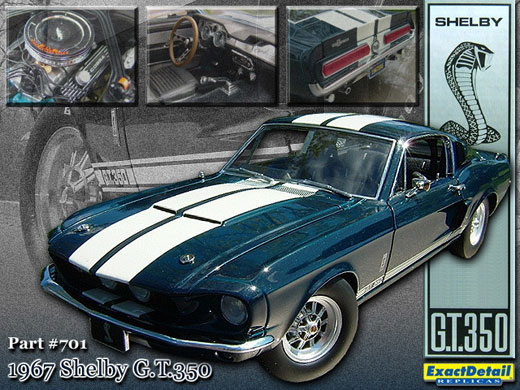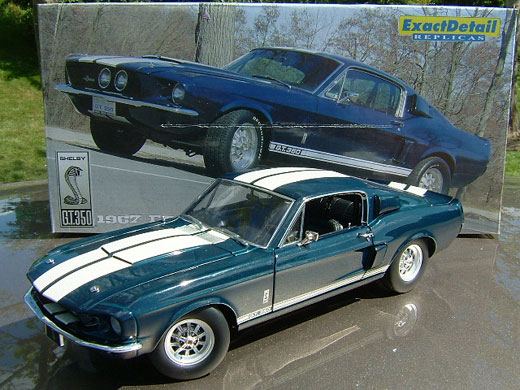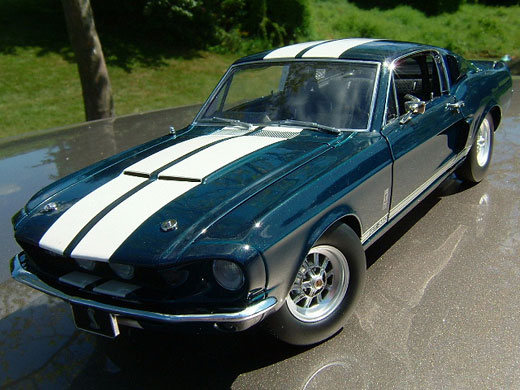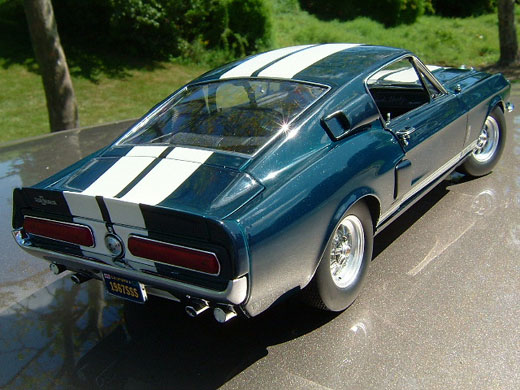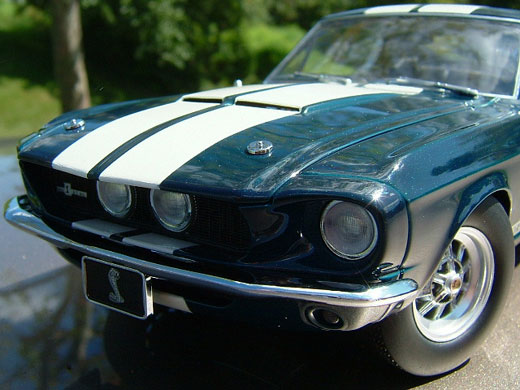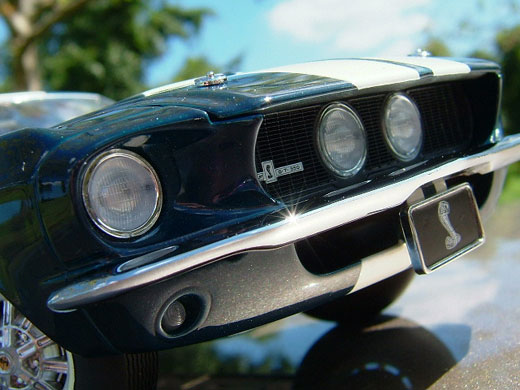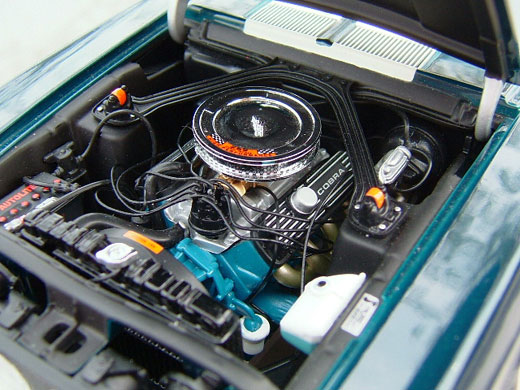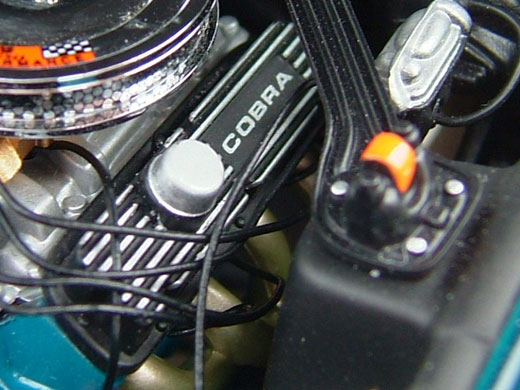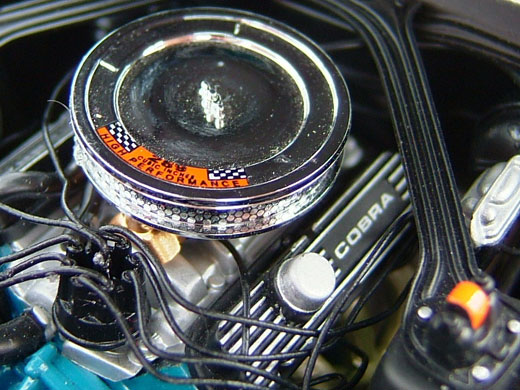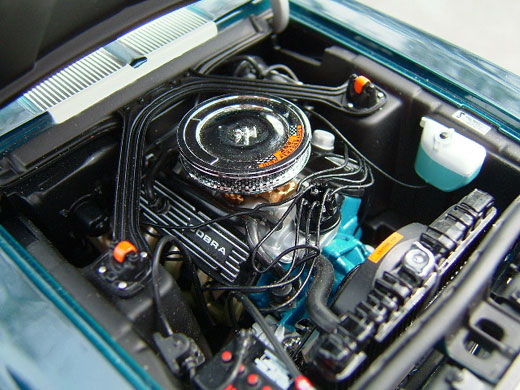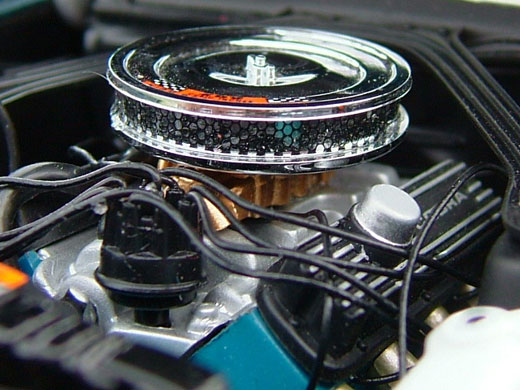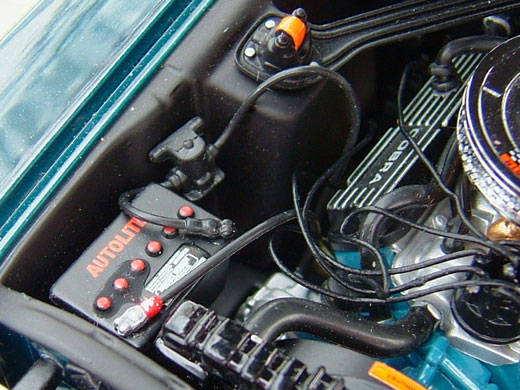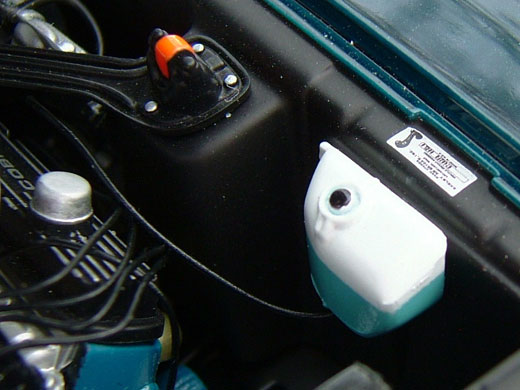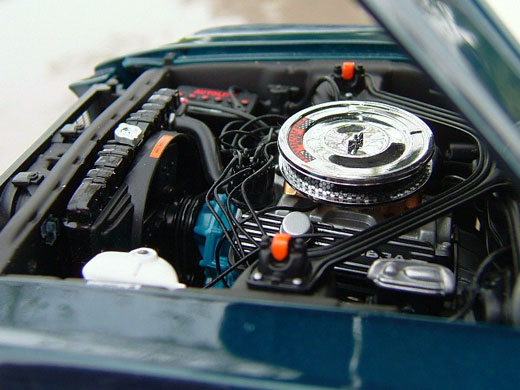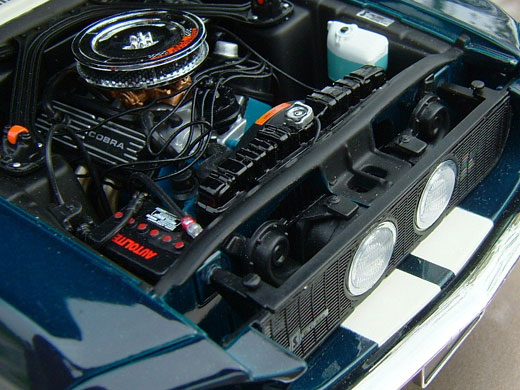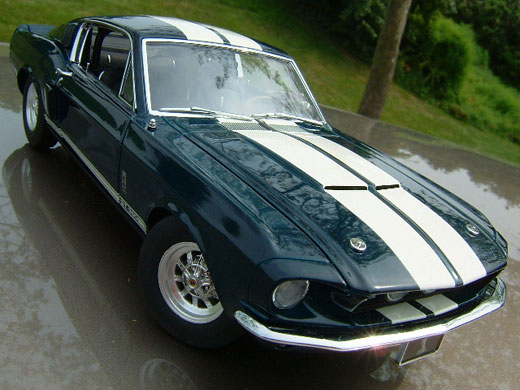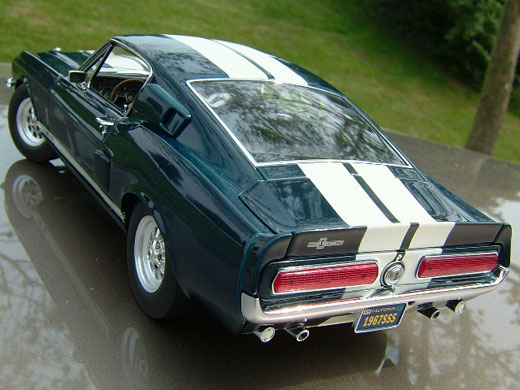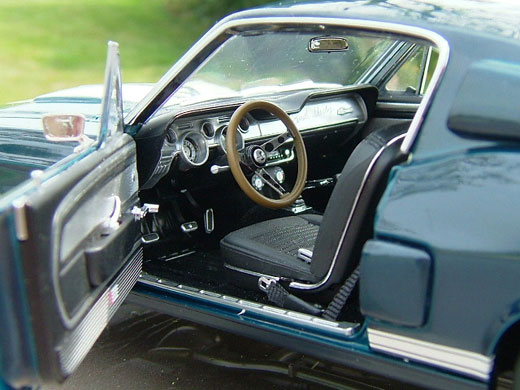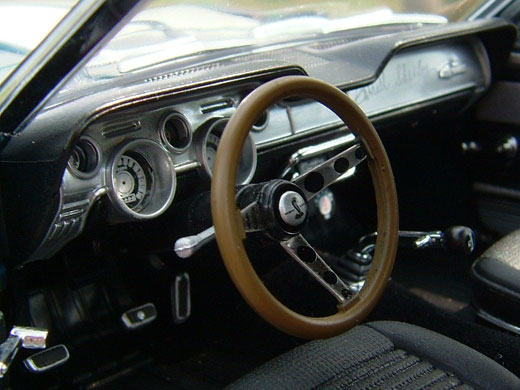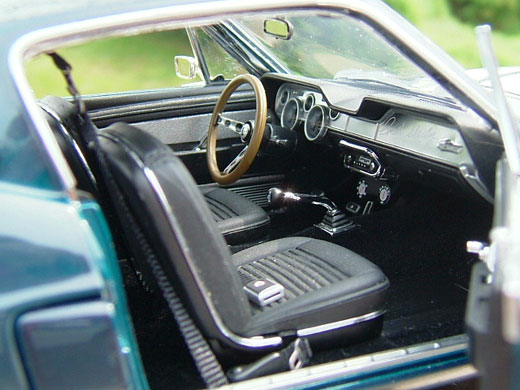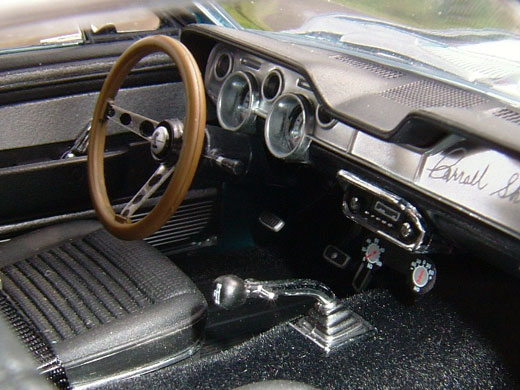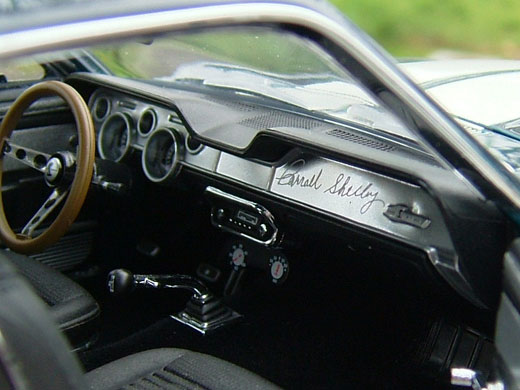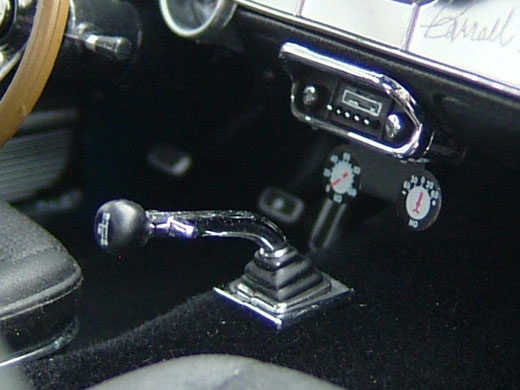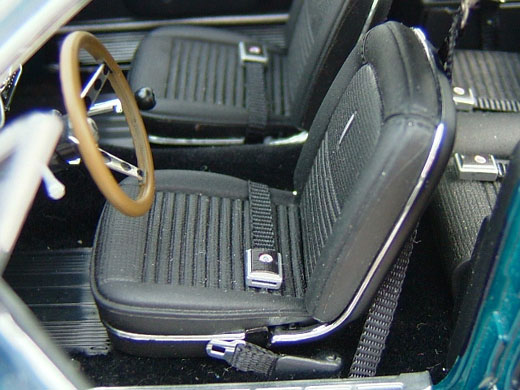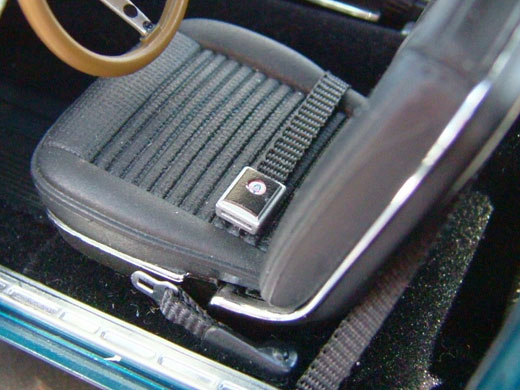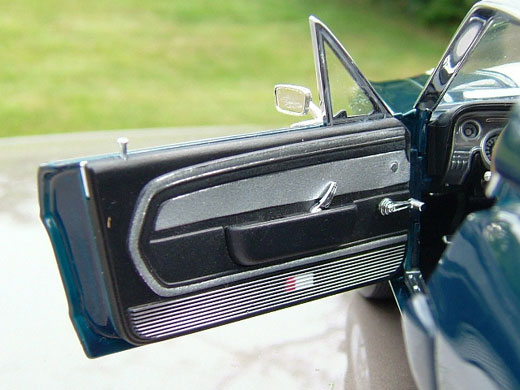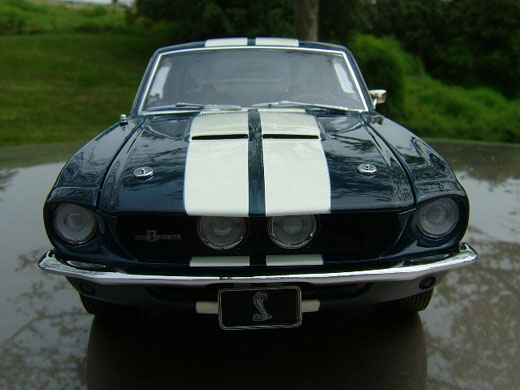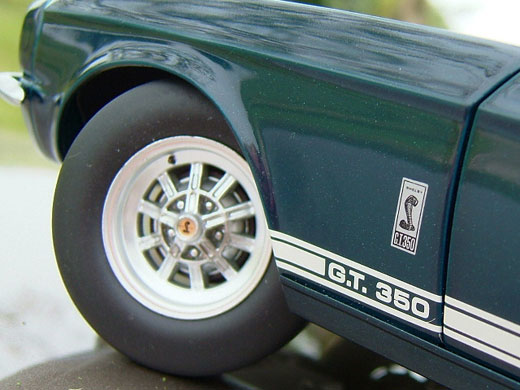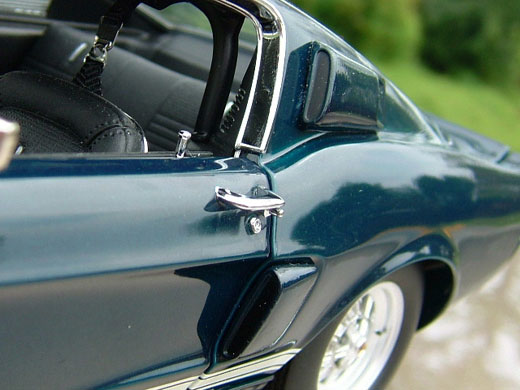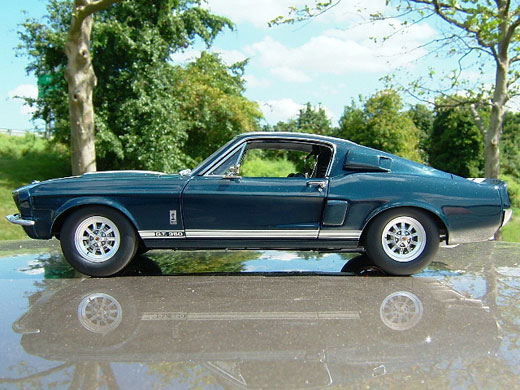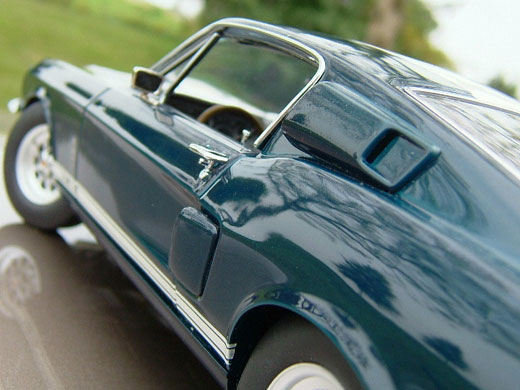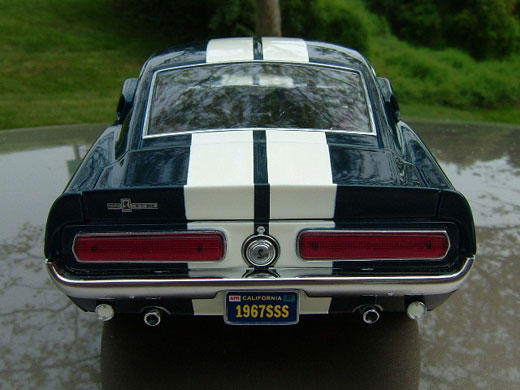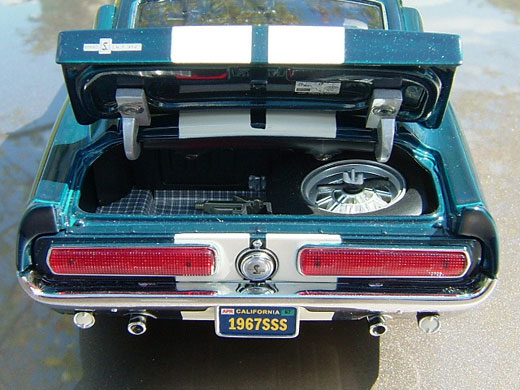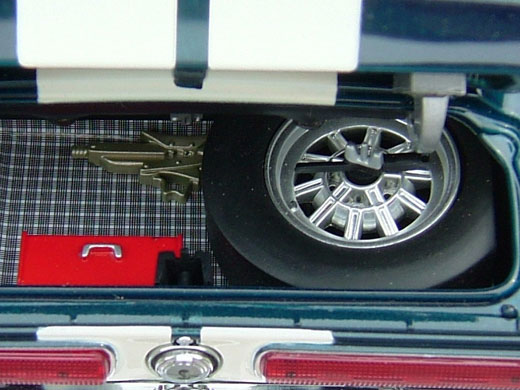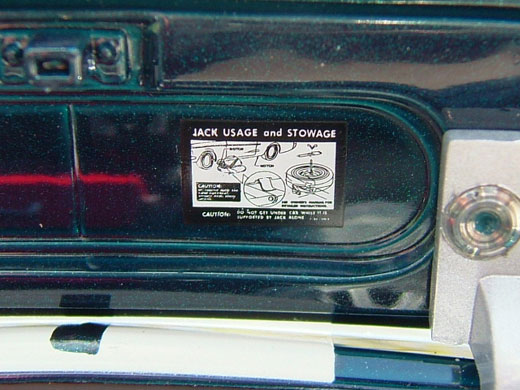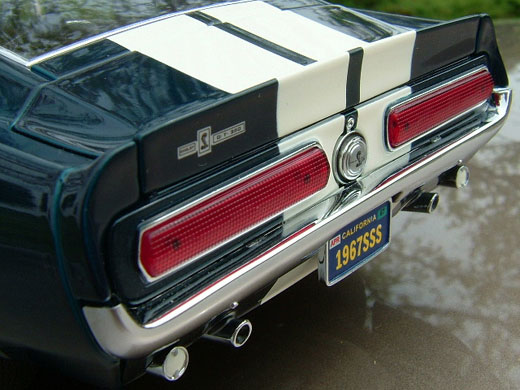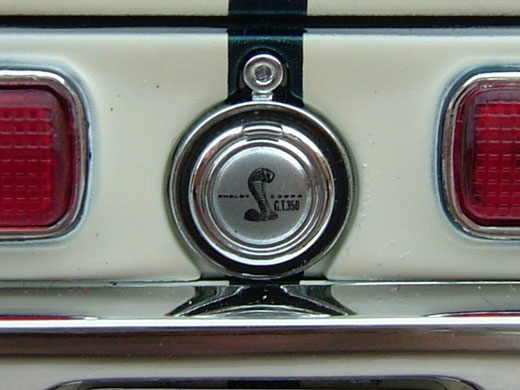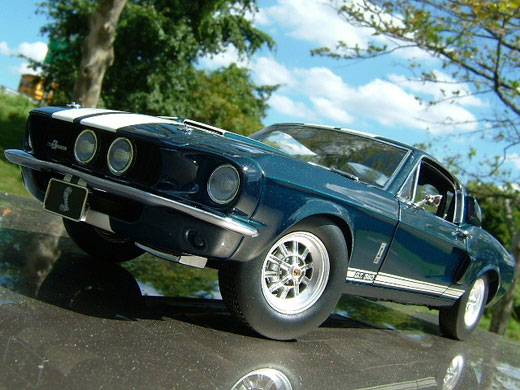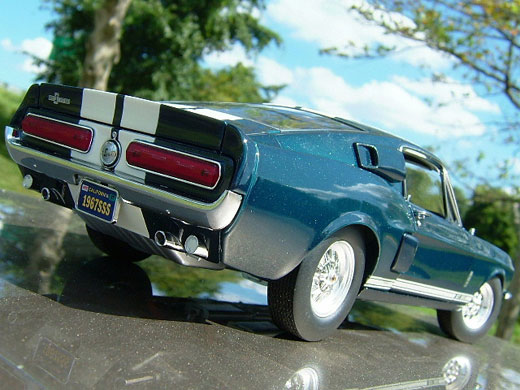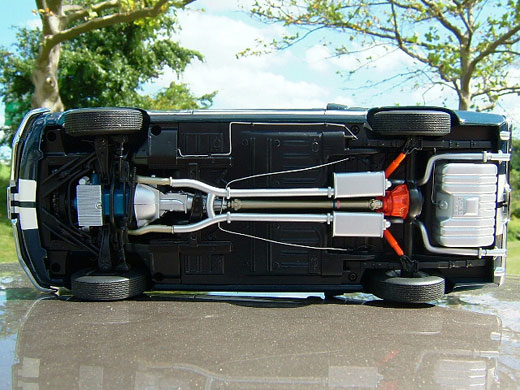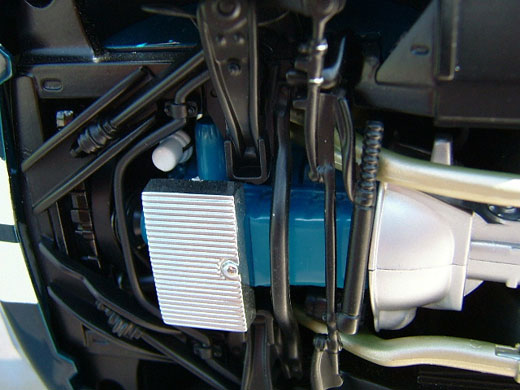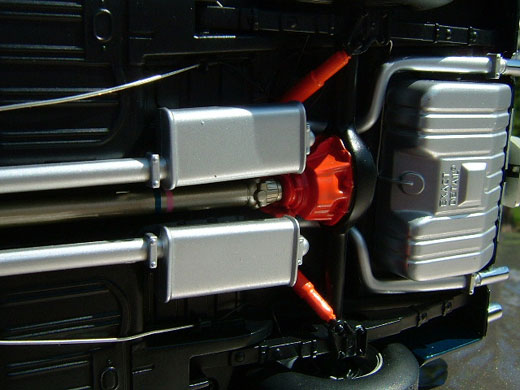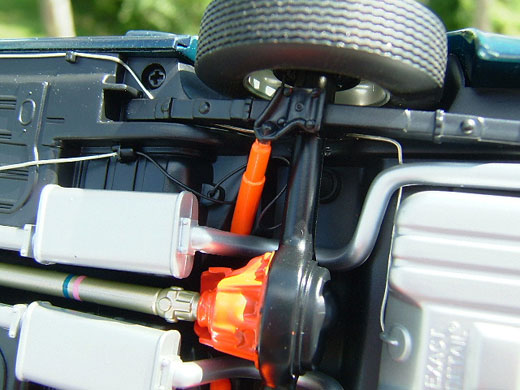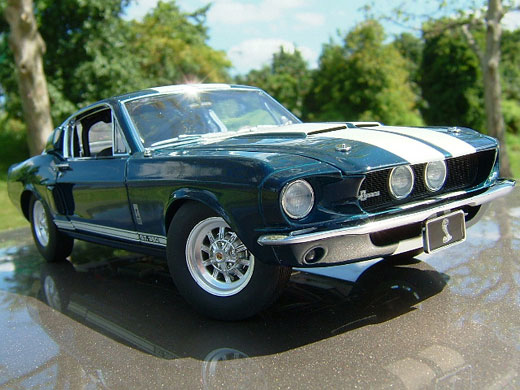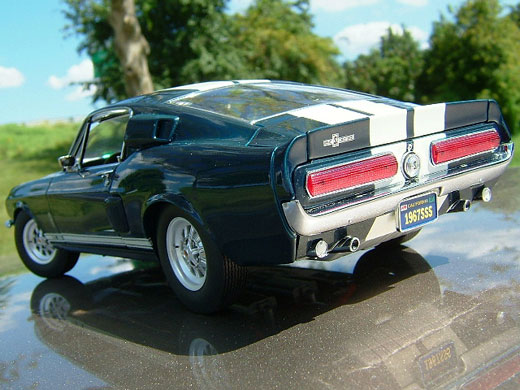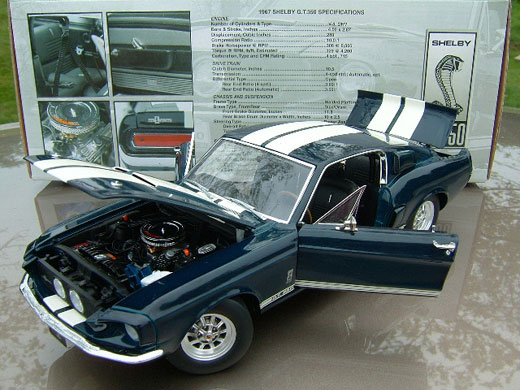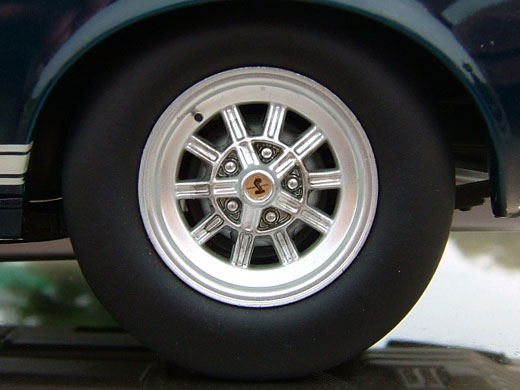 What do you get when you mix a Mustang with a Cobra? Well, in 1965, you’d get a potent pavement pounder known as the Shelby GT350. The Shelby GT350 was the end result of a triumphant marriage between two automotive icons, Ford Motor Company & Carroll Shelby - father of the legendary Cobra. Ford knew they had struck gold with their Mustang - which sold 22,000 units in the first day - but they were equally aware the competition was hot on their heels with their own plans for the pony car class. Ford realized they needed an advantage in order to better secure their position in the market that they virtually created, so Ford turned to perhaps one of the most sales friendly advertising campaigns - “Win on Sunday, Sell on Monday.” There was arguably no better man known for building race winning sports cars than Carroll Shelby himself.
What do you get when you mix a Mustang with a Cobra? Well, in 1965, you’d get a potent pavement pounder known as the Shelby GT350. The Shelby GT350 was the end result of a triumphant marriage between two automotive icons, Ford Motor Company & Carroll Shelby - father of the legendary Cobra. Ford knew they had struck gold with their Mustang - which sold 22,000 units in the first day - but they were equally aware the competition was hot on their heels with their own plans for the pony car class. Ford realized they needed an advantage in order to better secure their position in the market that they virtually created, so Ford turned to perhaps one of the most sales friendly advertising campaigns - “Win on Sunday, Sell on Monday.” There was arguably no better man known for building race winning sports cars than Carroll Shelby himself.
The 65 Shelby GT350 models did just what Shelby built them to do. The G.T. 350 was taking first place in class & first place overall in races all across the SCCA schedule. Advertisements claimed “It’s what’s up front that counts”. The Shelby GT350 successfully fulfilled the goal of pumping excitement into the Mustang brand which in turn helped Ford achieve record-setting sales of the Mustang. Unfortunately, the Shelby '65 GT350 wasn’t as strong of a sales success with only 516 street models sold in 1965.
There was clearly a limited market for the no-frills, raw performance type of road warriors the 65 GT350 models were, but even so, Shelby dealers & Ford executives agreed the GT-350 had potential to be not only a great marketing tool, but a strong sales success of its own. The consensus was with a few modifications in the right areas, the GT350 could be made to appeal to the broader masses that included more than just the pure racing enthusiasts. So for 1966, alterations included an automatic transmission, a back seat, and various unique styling cues such as triangular Plexiglas C-pillar windows and functional lower rear quarter panel scoops, all of which visually distinguished the Shelby GT350 from the standard Mustang. Perhaps the most significant improvement was the added option of choosing among several unique paint schemes. As a result of these various enhancements, sales for the 66 Shelby GT350 quadrupled over sales of the 65 GT350.
By 1967, it was evident what path the Shelby-ized Mustangs were headed down. Shelby clientele were made up primarily of educated enthusiasts with deep pockets. They knew what they wanted and they were willing to turn those pockets inside out in order to acquire the Shelby marque. Because of customer & dealer feedback, the 67 GT350 models took an even farther shift away from the brutish 1965 GT350 and moved more in the direction of the refined grand touring boulevard cruisers, combining performance with luxury in an even more distinguishing package.
The most distinctive changes came in the exterior styling of the '67 Shelby models. Besides various luxuries, it was equally important to these privileged buyers that Shelby GT cars were as visibly different from the standard Mustang as possible. Stripes weren’t going to cut it anymore. Ford actually altered the overall appearance of the Mustang in 1967 and consequently, Shelby followed suit with his GT cars. The front hood, nose & rear deck lid were purposely deleted during Fords production of the 67 Mustang as these areas would become unique to the Shelby GT cars.
The hood of the 67 GT350 was a fiberglass unit that measured 4 inches longer than the standard Mustangs and featured a wide split hood scoop. The hood was mated to an all fiberglass front nose which included the front headlight housings & fender extensions as well as the grille surround and the lower valance. Center mounted high beams were placed in the grille opening as was a Shelby GT350 nameplate which matched a similar plate mounted to the rear decklid. The back end of the 67 GT350 featured a pair of 67 Cougar taillights split down the middle by an exclusive Shelby Cobra adorned pop-open gas cap. The Shelby fastback roofline swept back to the fiberglass rear decklid, curving upward into the GT350 tail spoiler which was greeted on each end with matching fender extensions.
Perhaps the most striking differences on the 1967 Shelby GT cars were the C-pillar and quarter panel air scoops. The C-pillar-mounted scoops channeled air for interior cooling while the lower quarter panel scoops were designed to cool the brakes. Even so, the lower scoops were functional on only the early 67 Shelby before the decision was made to eliminate the ducting, making the scoops purely decorative. Additional decoration came in the buyer’s choice of wheel options. The 67 Shelby came standard with Goodyear Speedway 350 E70x15 tires wrapped around 5-spoke style wheel covers borrowed from the 67 Thunderbird - distinguished with Shelby Cobra center caps. Buyers could individualize their Shelby with the optional Kelsey-Hayes MagStar wheels or the 10-spoke aluminum wheels that came later in the year. As sharp as the looks of the 67 GT350 were, a period advertisement advised potential buyers “the fact that everybody looks at you is the last reason on earth for buying a Shelby GT, unless you love to be looked at!” There’s no doubt about it, this was an eye-catching road car.
In addition to unique exterior styling, the 1967 GT350 built on the successes of 1966 and added even more civilized amenities such as the Mustang Deluxe Interior, available in either black or parchment. The interior was highlighted with a brushed aluminum dash that surrounded a 140-mph speedometer and an 8000-rpm tachometer, recessed behind a unique wood-grained steering wheel. Brushed aluminum accents carried over to the driver & passenger side doors and Shelby Cobra GT350 logos adorned the brushed aluminum dash just above the passenger side glove box as well as the steering wheels horn button. Oil pressure & ammeter gauges were mounted underneath the center of the dash, secured in a metal bezel that was in fact an upside down rally-pac housing borrowed from the 66 Mustang. A standard feature on the 67 Shelby - which was a first for any production car at the time - was the GT350 models functional roll bar that came bolted to roof mounted brackets and welded to the floor pan. An integral part of the roll bar was a pair of shoulder harnesses, another production first, each of which were fastened to a pair of inertia reels. Over and above all of the included interior touches, the 67 GT350 further benefited from the addition of power brakes & power steering, optional air conditioning and a practically full spectrum of exterior colors.
One thing that remained virtually unchanged for the 67 GT350 was its race proven power plant - Shelby’s massaged 289ci Hi-Po solid-lifter V8. Topped off with a Cobra hi-rise aluminum intake manifold and a 715-cfm Holley carburetor, the GT350’s brawny 289 V8 was good for an estimated 306hp and 329 lb/ft of torque. The substitute of fiberglass parts in certain areas improved the GT350’s power to weight ratio which helped the GT350 launch to 60-mph in 7.1 seconds with quarter mile times in the low 15’s at over 90-mph. The 67 Shelby GT350 held onto much of the original performance of its 1965-born heritage, but otherwise, it was quite a departure from its 65 GT350 elder. Even so, it was what the buying public wanted, and as a result, over six times as many of the GT350 were sold in 1967 compared to sales in 1965.
Times were changing though. The 67 GT350 would undergo yet another cosmetic alteration for the 1968 model-year and the 1967 GT350’s impressive 289ci V8 would be replaced in 1968 by the Ford 302ci V8 which was good for a lesser 250hp. While Shelby also had its 428ci GT500 models for both years, the writing was nonetheless on the wall. Each year, Ford had extended greater authority over the Shelby Mustang program to the point that Carroll Shelby became disheartened with what had once been his invention. The relationship between Ford & Shelby eventually came to an end in late 1969 and the final Shelby GT Mustangs hit the market in 1970. By this time, with increasing governmental regulations and insurance industry pressures, the end was imminent.
To this day, the automotive world hasn’t seen a car quite like the Shelby GT350 & GT500 Mustangs of 1965-1970. But with the new 2005 Mustangs resurrecting familiar styling cues established by the 67 & 68 Mustangs, plus the fact that Carroll Shelby & Ford have recently rekindled their legendary relationship, the hope is alive that we may one day again behold the brilliance known as the Shelby GT350.
Until that day comes, enthusiasts can relive the glory of the 67 Shelby GT350’s thanks to the impressive talents of the diecast model car wizards located in Watervliet, Michigan. Eric Trapp and his team at Exact Detail Replicas have teamed up with acclaimed model designer Raffi Minasian and distinguished Shelby historian Rick Kopec to deliver a truly astonishing 1/18 scale diecast model of the 67 Shelby GT350. This particular GT350, modeled after a 1:1 67 GT350 belonging to Jarrod Kings, is actually the first in a series of high detail 1967 & 1968 GT350 and GT500 models from Exact Detail.
Authentically finished in a flawlessly rich Dark Blue covering with traces of metallic flake and optional white LeMans stripes, the Lane Exact Detail 1967 Shelby Mustang GT350 is simply stunning. The white stripes literally bounce off the surface of the model as do the several touches of chrome bright-work from the trim around the front & rear panes of glass to the dual chrome plated exhaust tips to the pair of simulated hood pins. Other chrome accents such as the front & rear bumpers, drip rail moldings, and outside door handles literally dance in brilliance against the Shelby model’s deep blue paint. The front & rear light assemblies are also framed in chrome as well are the inboard high beams which are mounted within a realistically detailed mesh grille.
Several distinctive markers have been accurately positioned on the replicas exterior, properly distinguishing this Shelby from any ordinary Mustang. Identical Shelby Cobra GT350 badges adorn the front grille & rear decklid and similar badges are properly worn on the front fenders in a vertical orientation just above the white side stripes which surround the Shelby’s bold G.T. 350 identifying characters. A chrome plated Shelby-exclusive pop-open-style gas cap - appropriately affixed to the rear tail light panel, filling the space between the Cougar style tail lights - is also decorated with a Shelby Cobra GT350 emblem. Even the beautifully detailed 10-spoke aluminum wheels are authentically accented with Shelby Cobra center caps. An eye-catching contrast to the Shelby’s dark exterior, the 10-spoke wheels are realistically detailed with miniature valve stems and come wrapped in a set of soft blackwall tires. Shelby enthusiasts will right away recognize the lack of raised white lettered Goodyear Speedway 350 tires - which were standard issue on the 1967 Shelby - but the blackwalls are nonetheless period correct and could have been opted over the Goodyear tires.
The shut lines of the various opening body panels are remarkably tight and the contours of the 67 Shelby from the curve of the rear quarter panel to the pronounced line in the Shelby’s profile, which runs from the rear quarter panel scoop to the leading edge of the front fender, have been exceptionally recreated. Compared to various pictures of 1:1 67 GT350 cars, there has been some debate of accuracy in the angle of descent in the front hood, specifically sighting the downward slope leading to the grille as appearing too steep. Personally, to this enthusiast, the front end of the Exact Detail 67 Shelby GT350 looks reasonably correct. Bottom line, whether or not the skin of this snake is truly off a fraction of an inch or whether it’s simply an optical illusion produced by the resizing of the 1:1’s specs in the modeling process, you don’t have to have Rick Kopec’s vast knowledge in order to properly identify this beautiful Shelby.
Underneath the scooped hood rests a magnificent reproduction of the GT350 engine bay. With the hood open, you can see the detailed structure in the front nose extension between the back of the radiator and the front grille. Exact Detail hasn’t overlooked any of the details, including the Shelby’s pair of horns, the detailed units which house the grille mounted high beams, and the “L” shaped hood latch bar. Of course, the main focal point under the hood is unquestionably the GT350’s Hi-Po 289 V8 which looks so real that you can almost hear the pavement pounding 306 horses rumbling between the Shelby’s detailed shock towers. Surrounded in a wild jungle of distributor wires & hoses, the GT350’s wonder of a small-block is anything but small on detail. The accurately painted Ford corporate blue engine block is topped off with a pair of black finned Cobra valve covers and an aluminum painted intake manifold which is mounted beneath a painted 4-barrell Holley carburetor and a detailed chrome air cleaner lid with the appropriate 289 High Performance decal.
As incredible as this miniature 289 is, the engine bay wouldn’t be as remarkable as it is without the remaining fine points that surround the superbly detailed small-block. Fine points such as the fan & fan shroud with the accurate label of caution, the radiator with its chrome plated cap, the detailed battery with cables and painted caps, even the starter solenoid which rests right alongside the battery. The windshield washer fluid reservoir is properly painted with simulated fluid and includes a line of its own which runs back towards the firewall and a detailed master cylinder.
On the other side of the firewall, concealed between a pair of realistically hinged doors, rests an extraordinarily detailed interior. Highlights include the simulated brushed aluminum treatment to the dash & door panels, soft to touch folding bucket seats, woven fabric lap belts, and woven shoulder harnesses attached to simulated overhead inertia reels which are mounted to the interior roll bar. On top of these great features is an even greater amount of detail. The speedometer & tach in the brushed aluminum dash are fully detailed and clearly legible. They rest behind a detailed 3-spoke steering wheel which is accented with a simulated wood grain rim and a Shelby Cobra emblem on the horn button. Another Shelby Cobra GT350 emblem adorns the brushed aluminum dash just above the passenger side glove box and next to it is a genuine Carroll Shelby stamped autograph. The floor pedals have been detailed with a splash of paint as has the floor mounted shifter. The oil pressure & ammeter gauges are crisply painted onto a thin but sturdy piece of metal which is properly attached to the underside of the dash. The dash pad is authentically detailed with accurate perforations and the headliner is appropriately finished off, including a pair of non-poseable sunvisors. The bucket seats are trimmed in a chrome plated molding and are genuinely detailed with the correct seat pattern and stitching accents. The woven lap belts are finished off with the appropriate fasteners and the “female” clasps are precisely detailed with authentic Shelby Cobra insert emblems. Chrome plated sill-plates frame off the marvelously detailed interior and a fully carpeted floor with detailed floor mats finish it off.
The GT350 diecast model’s opening trunk is also finished off with flooring of its own - a detailed, accurately patterned trunk mat. The trunk mat lies beneath a detailed jack stand and a spare tire wrapped around a 10-spoke aluminum wheel which is topped off with the proper mounting hardware. An impressively readable jack usage & storage label can be found on the underside of the trunk lid and amazingly, the galvanized trap door latch that holds the fold down rear seat in place has been molded and detailed with a splash of paint. A bright red toolbox sits to the left hand side of the fuel filler neck housing which is just above the GT350’s painted fuel tank. The painted fuel tank is just one of the many details found on the belly of this 67 Shelby. Splashes of paint have also been added to the rear differential as well as the 4-speed transmission. The rear shocks have been highlighted with orange paint and the front coil suspension is accurately represented by a pair of springs. Steel fuel & brake lines have become signature features on any Exact Detail model and they’ve faithfully been included on the 67 Shelby. The fuel line runs along the outside of the frame to the fuel tank and brake lines are routed to both the front discs & rear drums. The exhaust & mufflers are finished in a stainless steel application and the driveshaft is painted in shade of bare metal, realistically finished with painted on driveshaft identification stripes. Turn the rear wheels on this GT350 and watch as the driveshaft comes to life for the first time on an Exact Detail model, rotating in sync with the rear wheels.
So what do you get when you mix an automotive legend with a modeling icon? You get the 1/18 scale Exact Detail 1967 Shelby GT350. Other manufacturers have attempted to capture the look of the 67 Shelby’s in the past in various scales from 1/43 to 1/18, but none have achieved the breathtaking splendor the Lane Exact Detail release evokes. Of course, the other manufacturers didn’t have the three wizards working on their models. Eric Trapp has proven his detailing skills time & time again with the Exact Detail line and Raffi Minasian is a legendary designer and artist that has proven his talents more than once as the former design director at the Franklin Mint. And what more can you say about Rick Kopec, President of the Shelby American Automobile Club? There isn’t a better man besides Carroll Shelby himself to work with on a Shelby related item. With these three experts combined, you can expect the end result to be nothing short of extraordinary. If one were asked to sum up the Exact Detail 67 Shelby GT350 in one word, extraordinary would be it.




